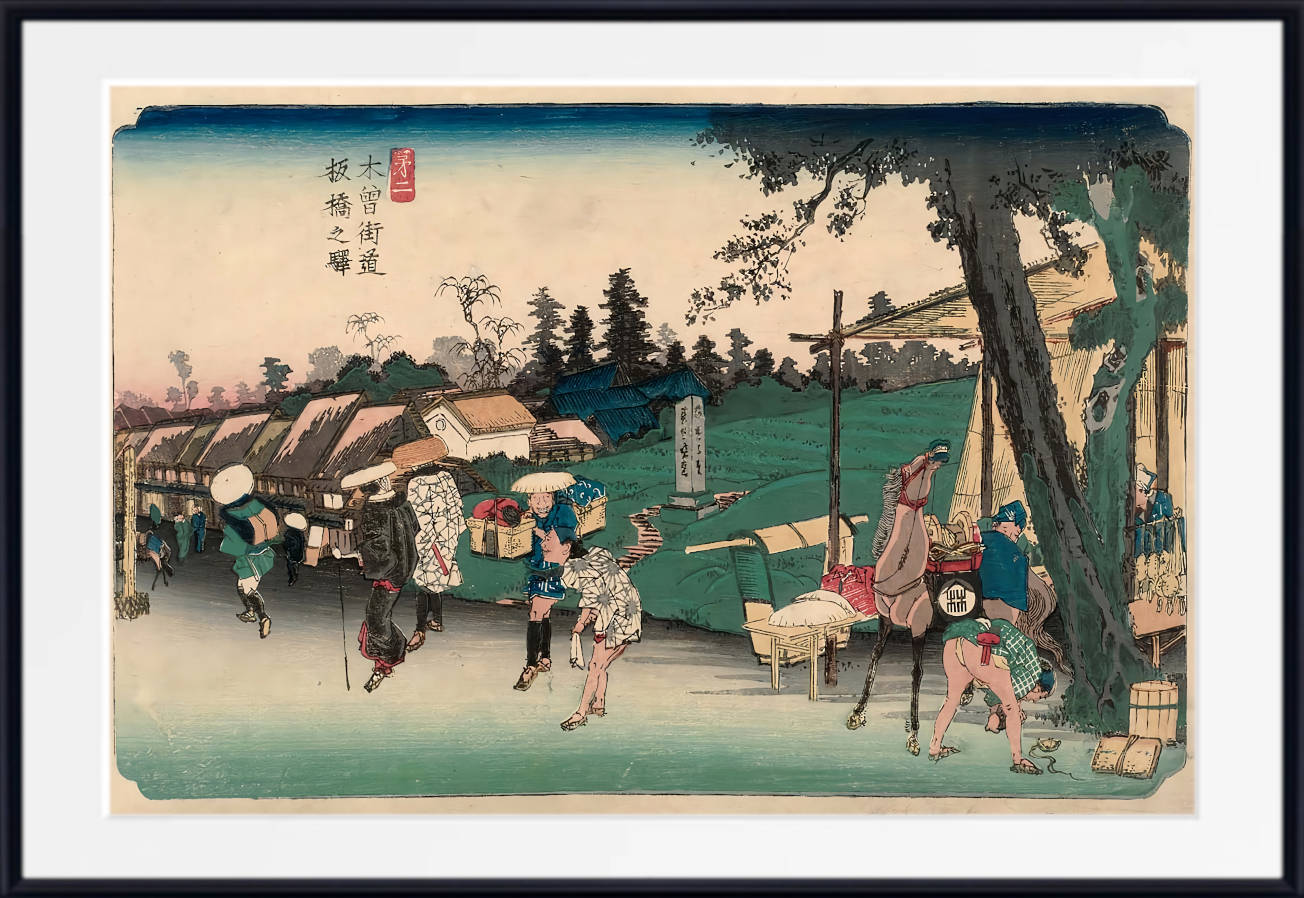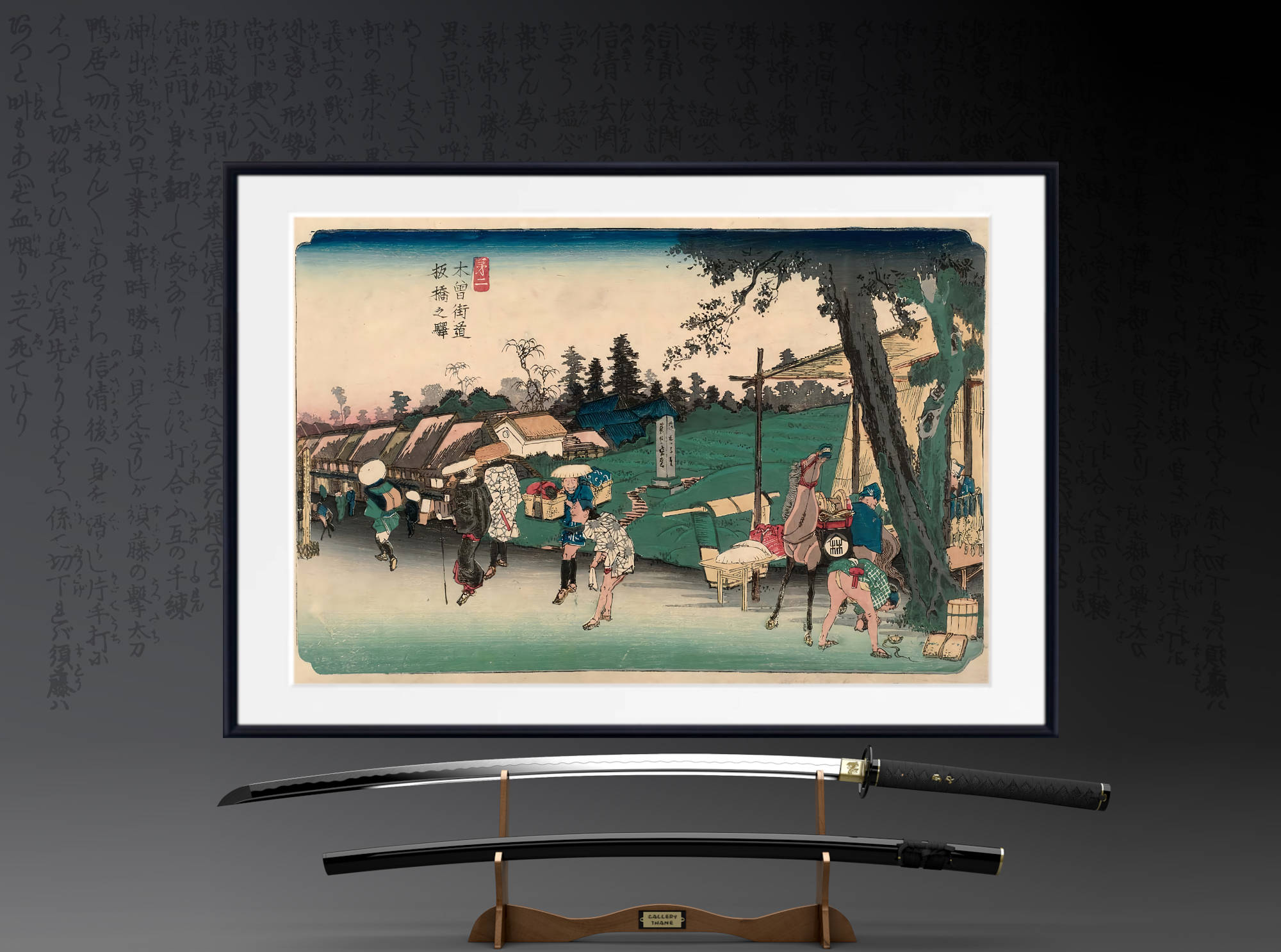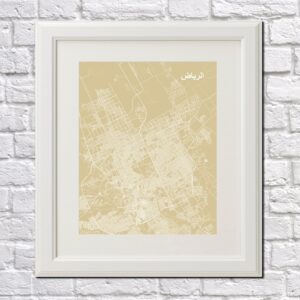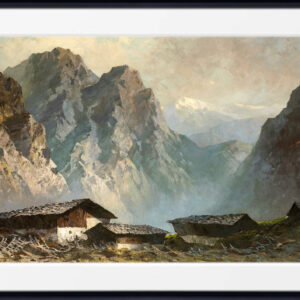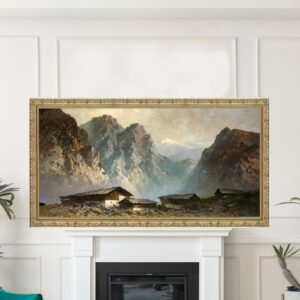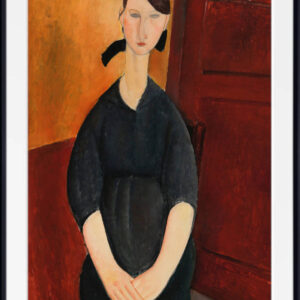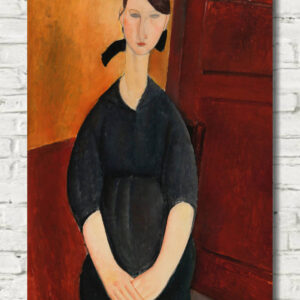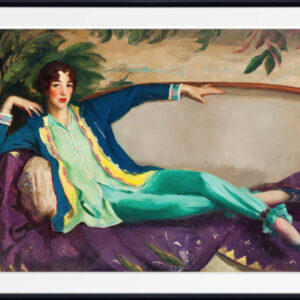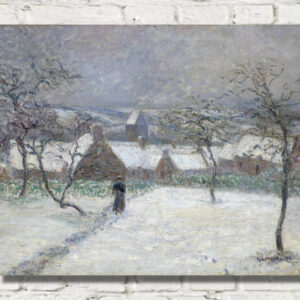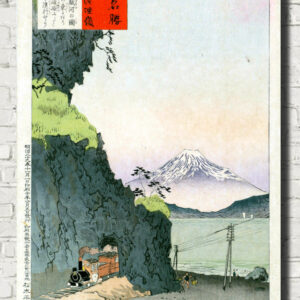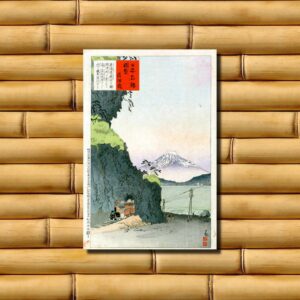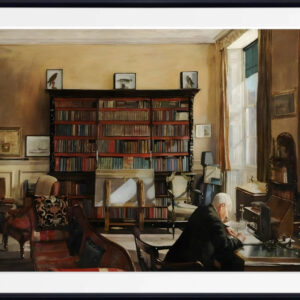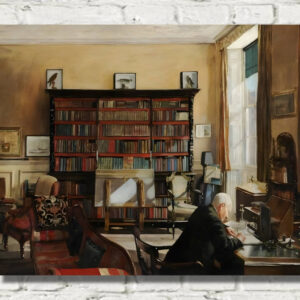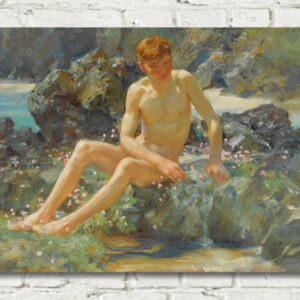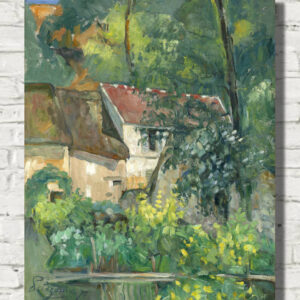The 69 Stations of the Kiso Kaido | Keisai Eisen Print – Itabashi
The 69 Stations of the Kiso Kaido | Keisai Eisen Print – Itabashi
The 69 Stations of the Kiso Kaidō
The Sixty-nine Stations of the Kisokaidō (木曾街道六十九次, Kisokaidō Rokujūkyū-tsugi) or Sixty-nine Stations of the Kiso Road, is a series of ukiyo-e works created by Utagawa Hiroshige and Keisai Eisen. There are 71 total prints in the series (one for each of the 69 post stations and Nihonbashi; Nakatsugawa-juku has two prints).
The common name for the Kisokaidō is “Nakasendō” so the series is sometimes referred to as the Sixty-nine Stations of the Nakasendō. It is a follow-up to Hiroshige’s The Fifty-three Stations of the Tōkaidō and he produced 47 of the prints, with Eisen being responsible for the rest.
The series was published by Iseya Rihei (Kinjudō) from c. 1834-1842
The Nakasendō was one of the Five Routes constructed under Tokugawa Ieyasu, a series of roads linking the historical capital of Edo with the rest of Japan. The Nakasendō connected Edo with the then-capital of Kyoto. It was an alternate route to the Tōkaidō and travelled through the central part of Honshū, thus giving rise to its name, which means “Central Mountain Road”. Along this road, there were sixty-nine different post stations, which provided stables, food, and lodging for travelers.
Keisai Eisen – The Artist
Keisai Eisen (渓斎 英泉, 1790–1848) was a Japanese ukiyo-e artist who specialised in bijin-ga (pictures of beautiful women). His best works, including his ōkubi-e (“large head pictures”), are considered to be masterpieces of the “decadent” Bunsei Era (1818–1830). He was also known as Ikeda Eisen, and wrote under the name of Ippitsuan.
Eisen was born in Edo into the Ikeda family, the son of a noted calligrapher. He was apprenticed to Kanō Hakkeisai, from whom he took the name Keisai, and after the death of his father he studied under Kikugawa Eizan. His initial works reflected the influence of his mentor, but he soon developed his own style.
He produced a number of surimono (prints that were privately issued), erotic prints, and landscapes, including The Sixty-nine Stations of the Kiso Kaidō, which he started and which was completed by Hiroshige. However, his most famous works are the bijin-ga (pictures of beautiful women) which portrayed the subjects as more worldly than those depicted by earlier artists, replacing their grace and elegance with a less studied sensuality. He produced many portraits and full-length studies depicting the fashions of the time.
In addition to producing a prolific number of prints, he was a writer, producing biographies of the Forty-seven Ronin and several books, including a continuation of the Ukiyo-e Ruiko (History of Prints of the Floating World), a book which documented the lives of the ukiyo-e artists. His supplement is known as “Notes of a Nameless Old Man.” He describes himself as a dissolute hard-drinker and claims to have been the owner of a brothel in Nezu in the 1830s which had burned down.
Other Japanese Print Series
53 Stations of the Tokaido
36 Views of Mt Fuji
All prints are made using archival art stocks and UV pigment inks to give up to 200 years life. Prints are sold unframed and unmounted.

